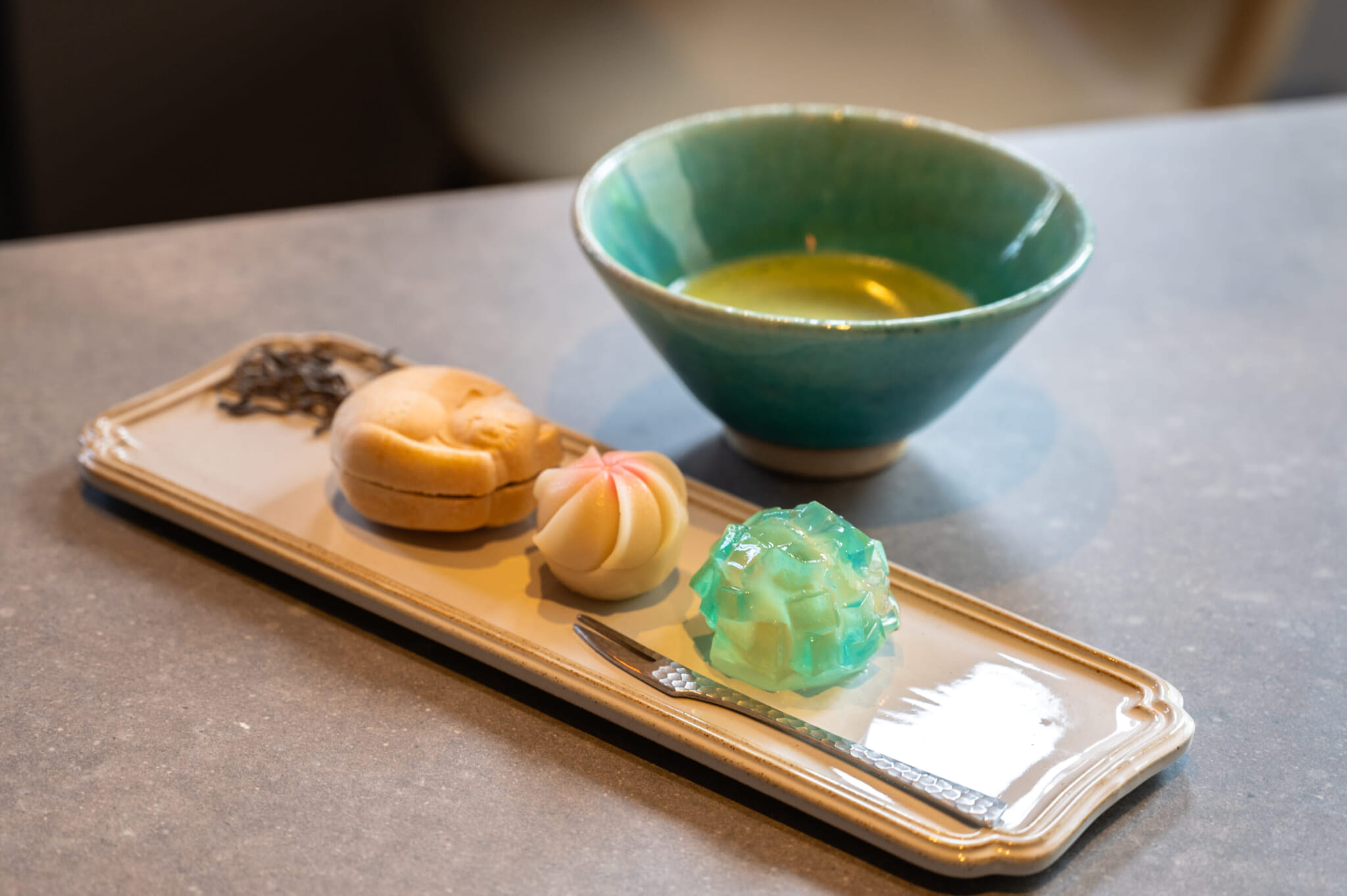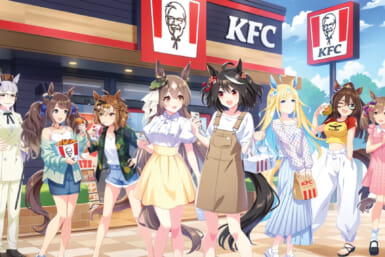A miniature peach sits on the table, a gem glittering on its blushed skin. A cup of roasted coffee dwarfs the tiny confection, steaming as the diminutive dessert glimmers in the light coming through the window. This isn’t a real peach — it’s a nerikiri Japanese sweet, made near Yoyogi Park in a beautiful little cafe called Kantan na Yume.
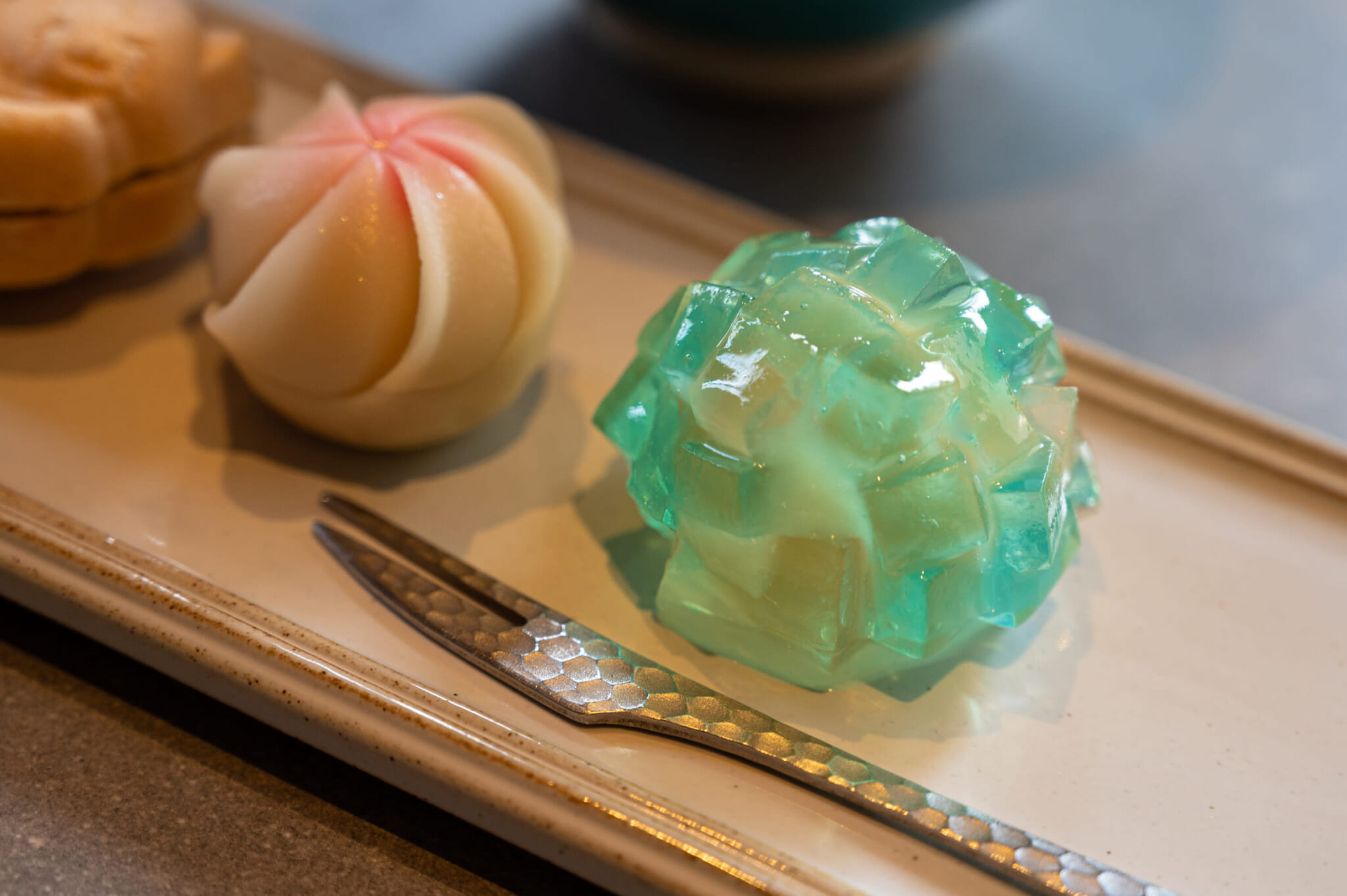
Nerikiri With a Difference
Nerikiri are perhaps Japan’s daintiest morsels: tiny cakes made by kneading together white bean paste and Chinese yam, traditionally eaten during tea ceremonies. Sweet flavors thread through these meticulously shaped desserts. Yet it’s not very common to encounter them in everyday life, outside of a tea ceremony setting.
“‘Let’s go for a coffee,’ you might suggest to a friend, but when has anyone said, ‘Hey, let’s get nerikiri?’” says Juri, the mastermind behind the sweet shop and cafe. The shop’s name, Kantan na Yume, literally translates to “easy dream,” but Juri tells us that it actually comes from a Chinese proverb, meaning “to take time for yourself.” It specializes in innovative nerikiri, eaten with matcha, but also coffee, wine and gin.
The sweets made by Kantan na Yume are not your typical nerikiri. Instead of encasing simple azuki bean paste, these nerikiri pulse with a range of delicate flavors, from Earl Grey to pineapple. Other types of wagashi (traditional Japanese sweets) are on offer, with a twist, of course. The bean paste that fills its adorable cat-shaped monaka wafers, for instance, comes in roasted green tea flavor; peel open the biscuit to reveal its hidden bounty with a waft of hojicha.
One defining characteristic of nerikiri is its sensitivity to the seasons. Like much of Japan’s traditional culture, each design and flavor reflects the changing climate, be that plum notes for spring or rosemary for summer. The shop’s most popular sweet is its only permanent fixture: its bejeweled “Kiki” lemon cheesecake. Most of Kantan na Yume’s sweets are vegan, but this contains real cream cheese, encased in lemon-infused white bean paste.
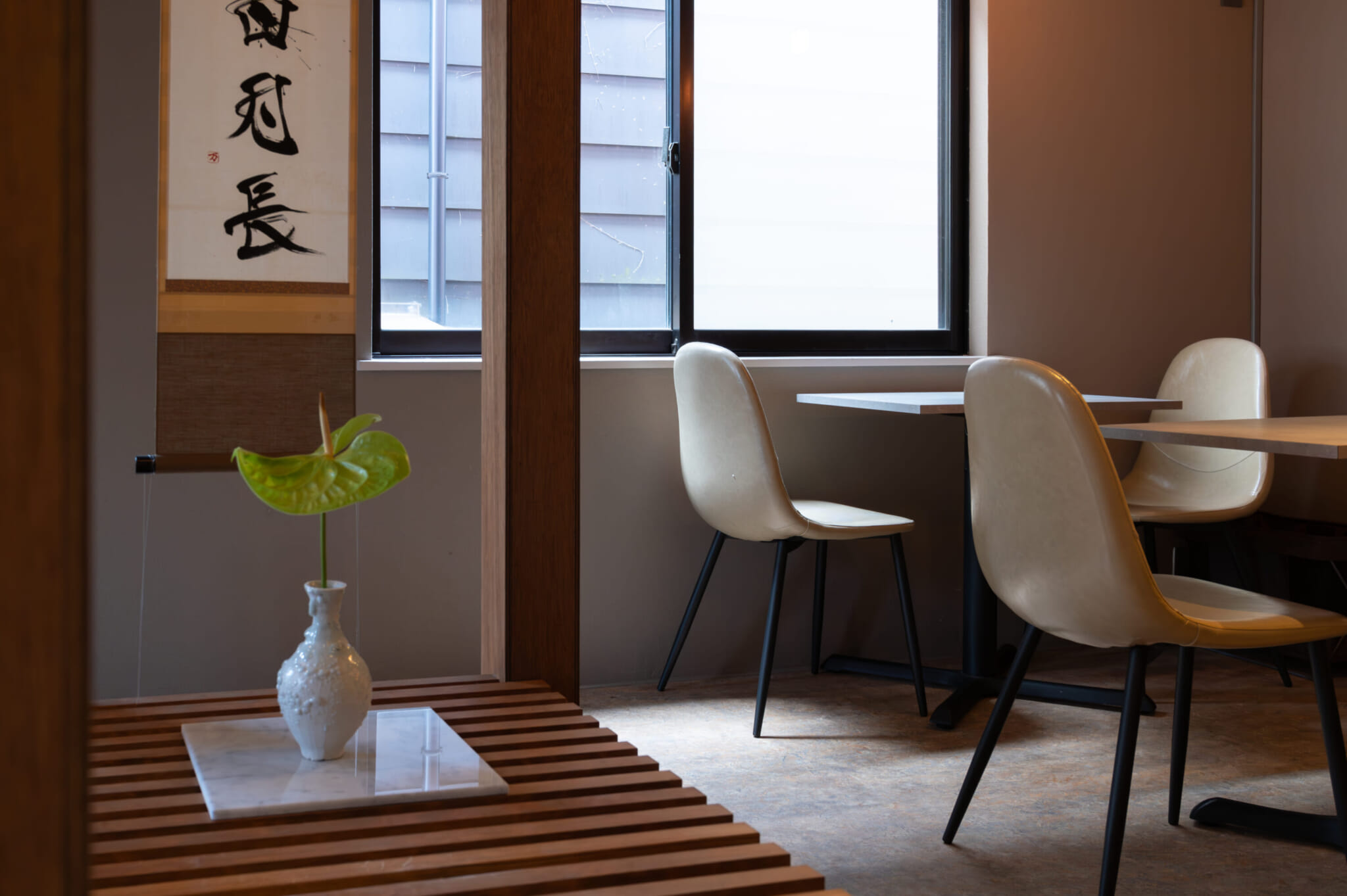
Feel the Seasons
Juri started making wagashi in earnest at the age of 25. She’d trained in a patisserie after junior high school in her hometown of Miyazaki and discovered a love of wagashi independently from the course. “I was completely self-taught,” says Juri. She considered the wagashi business, but typically, anyone wanting to get into the industry must slog away at an established family shop for years. “It’s all about the shop’s reputation, and that didn’t appeal to me at all,” she adds.
So instead, Juri moved into restaurant development around Osaka and Kyoto, where she often enjoyed nerikiri from one of Kyoto’s many wagashi shops. It was during a particularly busy stretch of work that she paid a visit to a senior and had an epiphany. “They made tea, and served it with yokan — a traditional sweet made out of bean paste — in the shape of momiji. When I saw it, I realized that it was fall, but I’d been so busy working that I hadn’t even noticed.”
It was in that moment that Juri truly appreciated the seasonal variation as reflected in wagashi. “And then I quit my job and started making wagashi.” She laughs at the suddenness of it all.
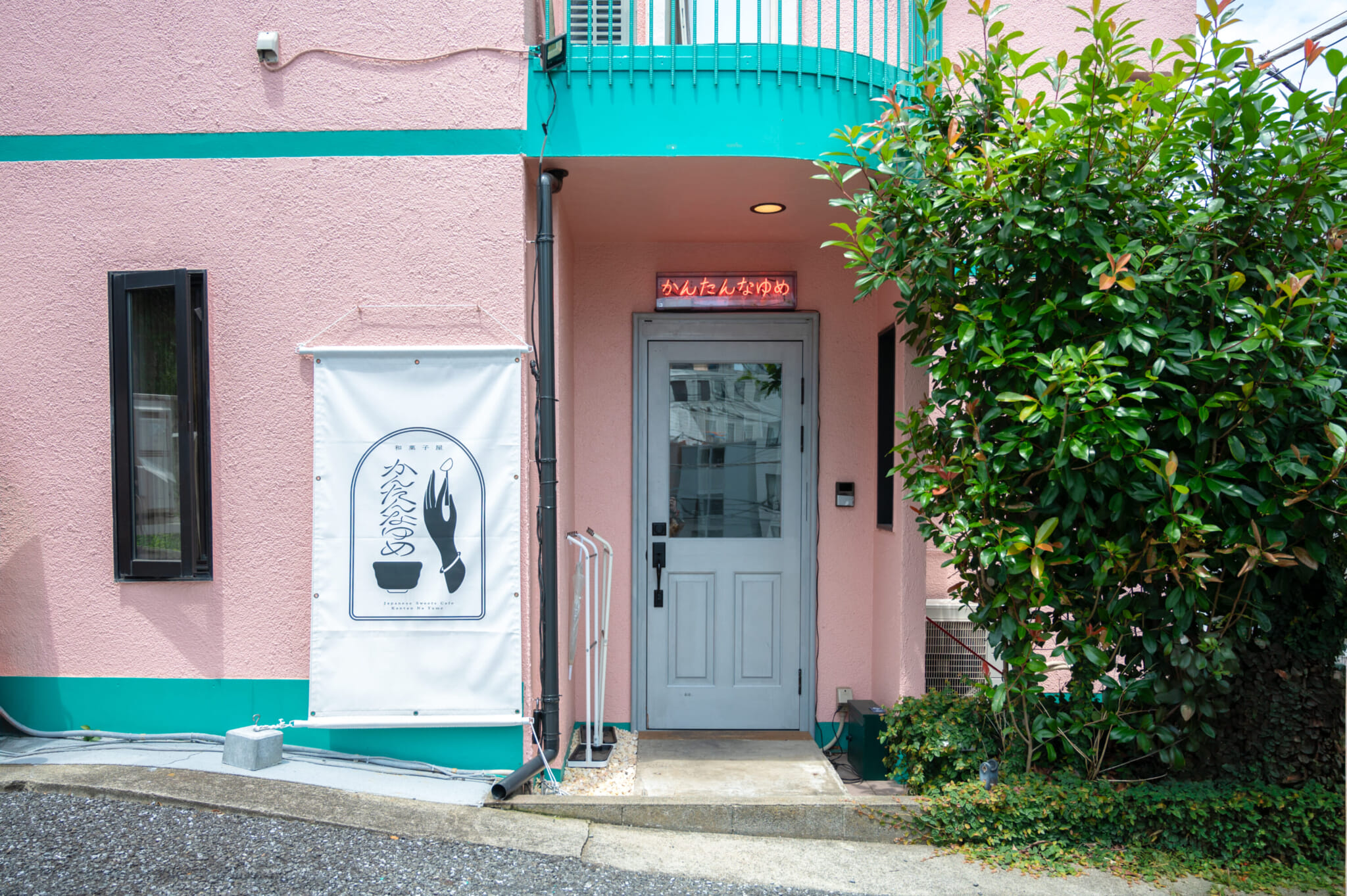
Opening Kantan na Yume
Juri opened her first store in Shibuya in 2019. She shared the space with an oden shop, opening during the day when the shop was closed, before moving to a temporary store in Nihonbashi for just over two years.
Buzz grew, and in 2023 she worked with the musician Seiho to open Kantan na Yume in Yoyogi: a two-story cafe and bar serving wagashi alongside a selection of drinks. Kantan na Yume aims to be a place where people can go to chill out, unwind and relax. Whether it’s coworkers heading out after work, old friends catching up or mother-daughter time, every meeting is welcome.
“Even though we all have an equal amount of time across 365 days, 24 hours, the way we experience it shifts depending on our lifestyle, and sometimes it can feel hard to escape,” Juri says. “Here you can come and eat Japanese wagashi, notice the shape and feel the season.” She highlights hydrangea-inspired nerikiri during the rainy season. “Wagashi offer a short breather so you can feel motivated for the next day.”
The cafe’s three-sweet selection is particularly popular, eaten with a drink. Traditional matcha is available, as well as coffee, other teas and alcohol. Juri notes that the monaka and cheesecake varieties go especially well with coffee. The wagashi comes with a side of shio-konbu, or salted seaweed, its salty palate said to set off the sweetness of the dainty treats.
The place does a roaring takeout trade as well. “We’re super close to Yoyogi Park, so people often buy a box and take them to a picnic and crack open a bottle of wine.”
Kantan na Yume is open until 6 p.m. most days and until 10 p.m. on Wednesdays.
Related Posts
- 7 Places for Authentic Japanese Tea Ceremony in Tokyo
- 10 Creative Ways to Enjoy Matcha in Japan
- Minimal: A Gourmet Chocolatier in Yoyogi
Updated On July 22, 2024

